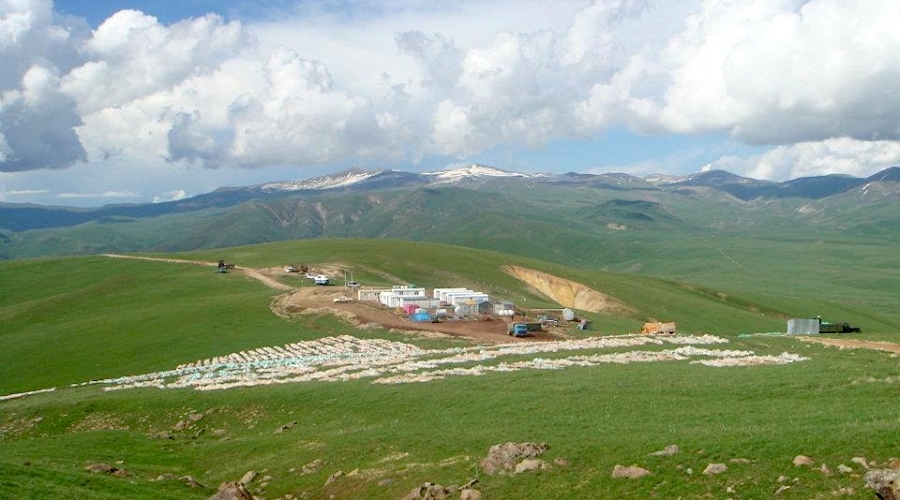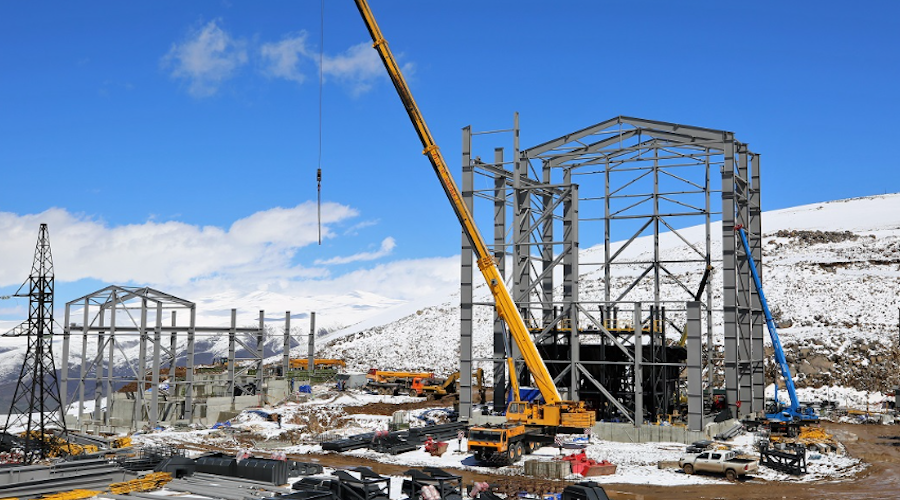
The government of Armenia has inked a $250 million deal with Lydian Armenia, the company that owns the license to operate the vast Amulsar gold mine, effectively allowing the resumption of operations.
Minister of Economy, Vahan Kerobyan, said in a statement that, as part of the agreement, Lydian had yielded 12.5% of its shares in the gold mine to the government.
The company is also expected to pay $7 million a year in financial assistance to communities in the Amulsar region during the construction period.
The project has had a long and controversial history in Armenia, as it sits above a tunnel that supplies water to Lake Sevan, the largest freshwater lake in the whole Caucasus region.
Opponents to the project, in Armenia’s mountainous south, forced the company to halt operations in 2018. They claimed Almusar would threaten several endangered animal species. These include the world’s rarest big cat, the Caucasian Leopard, of which there are thought to be only 10 left in Armenia.
Lydian International, the previous owner, made several efforts to get the project off the ground, including hiring a third-party to review the company’s Environmental and Social Impact Assessment (ESIA) and Environmental Impact Assessment (EIA).
Despite positive results from the study, and the company’s intention to bring the case to international arbitrage, Lydian International finally gave up.
The company, which claimed to have invested $370 million in the project before activist blockades, filed for bankruptcy protection in Canada in late 2019 before being restructured.
The project currently belongs to Lydian Armenia, a subsidiary of Lydian Canada Ventures, which is owned by Orion Mine Finance in the United States and Osisko Gold Royalties in Canada.
The Eurasian Development Bank (EDB) plans to extend a loan of up to $100 million in addition to $150 million mobilized by Lydian. The lender’s help will finance the completion of construction, which is scheduled to resume this year.
“The EDB is paying special attention to projects in Armenia in this strategy period (…) By starting cooperation with Lydian Armenia, we expect to implement a project that meets high environmental standards, has a positive impact on the economy and creates employment opportunities,” Denis Ilin, vice chairman of the EDB management board, said in the statement.
John Harker, former chief negotiator in a number of mining and extractive related conflicts, who participated in negotiations between Lydian International and the Armenian government, is cautiously optimistic.
“It is reasonable to wonder if this project will, after a few years of forced closure, finally get off the ground. Or, one might say, get to grips with that ground,” Harker told MINING.COM.
“Today’s climate, in which more and more miners are embracing the challenges and opportunities of [environmental, social, and governance – ESG], makes it more realistic to expect that the Amulsar project will, indeed, move into production,” he said.

The expert noted that since the days of the project blockade and closure, Armenia has been through hazardous times, including the invasion by the armed forces of Azerbaijan.
“It cannot be ignored that a vulnerable country must see the wisdom of revenues which can help it maintain the defence of its people,” Harker said.
Amulsar was envisioned as a large-scale operation with annual gold production averaging around 225,000 ounces over an initial 10-year life. Estimated mineral resources contain 3.5 million measured and indicated gold ounces and 1.3 million inferred gold ounces as outlined in the Q1 2017 technical report.